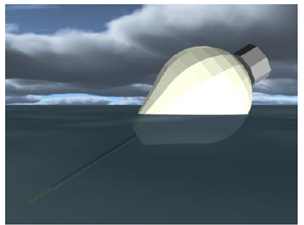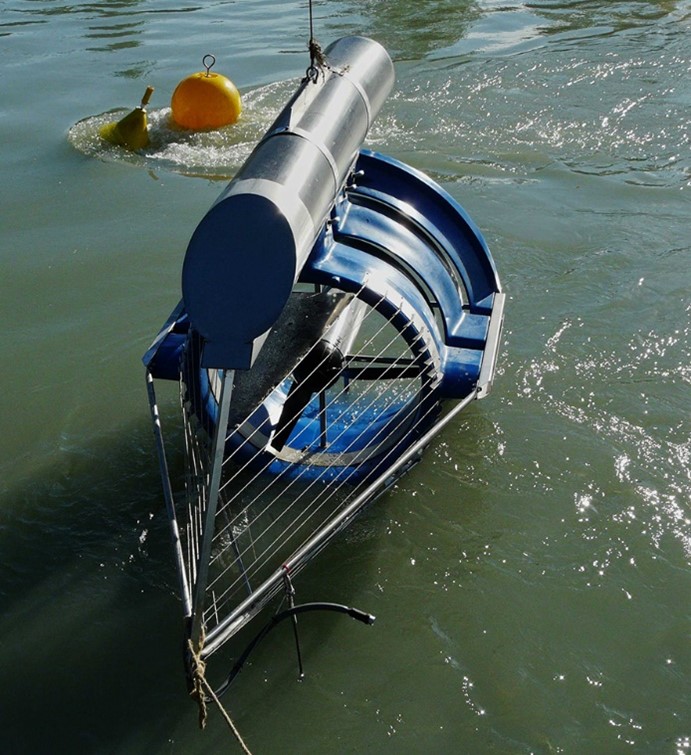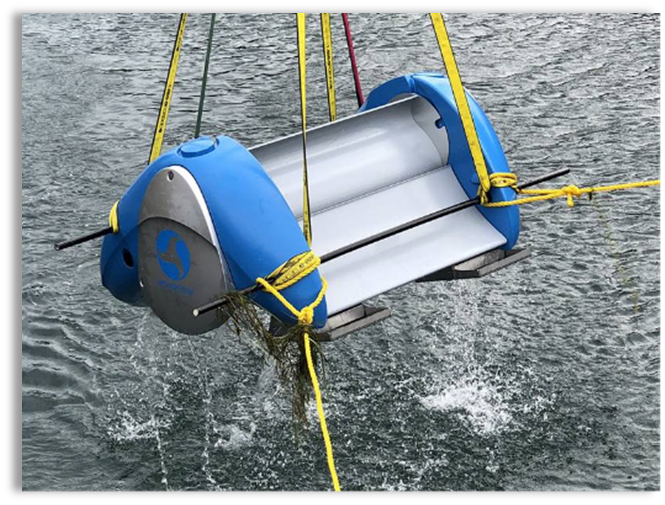Addressing technical challenges to enable hydrokinetic clean power generation in river and coastal communities
Strategic Area
Energy – Technology and Innovation
GHG & Air Emissions
Status
Complete
Partners
Bridge Gap Renewables
CanWatt
DDMotion
New Energy
Province of Manitoba
Province of Nova Scotia
Sustainable Marine Energy
Sustainable Ocean Applied Research
Tritech Gemini
Waterotor
Fund
Clean Growth Program
Year
2018-2024
CGP Contribution
$ 1,440,000
Science & Technology Assistance for Cleantech (STAC) Contribution
CanmetENERGY Ottawa
$ 140,000
Project Total
$ 2,305,000
Location
MB, NS
Find out more
Lead Proponent
University of Manitoba
Project Objectives
The main objective of this project was to allow hydrokinetic resources to be included in Community Energy Plans (CEPs) to add base-load distributed clean power generation to reduce or eliminate diesel use.
The project addressed technical challenges for tidal power applications, including understanding interactions between turbines and marine animals, and evaluating effects of turbulence on energy production.
Technical challenges for river applications were also addressed, including operation through winter months to increase capacity factors; optimization of turbine array layouts; and testing low velocity turbines focused on conditions at many remote communities.
Results
Canada has significant river and tidal resources that could be tapped to provide clean power to both densely populated and remote communities.
Once proven, hydrokinetic turbine technologies (HKT) can benefit remote communities across Canada by improving local economies through the generation of base-load clean energy using local resources, thus eliminating reoccurring purchases of fossil fuels that contribute to climate change, environmental issues, and health problems.
This project supported over 6 unique activities to address technical challenges for river applications, as well as improve access and awareness to hydrokinetic and tidal resources as renewable options.
The project improved access to renewables through the development of best practices, resource assessments, flow metering tools, marine animal detection systems, and the demonstration of novel river hydrokinetic designs. In addition, the development of the river resource atlas serves as a first step to using hydrokinetic resources in rural and remote communities.
Specific results include:
Research and Development
- Best practices for remote community tidal power assessments – Demonstrated cost effective methods for measuring tidal flows in remote communities, including case studies in Nunatsiavut and Haida Gwaii working with Indigenous organizations. Assessments used a combination of technical, traditional and local knowledge, including aerial drone images of ice flows and advanced data analysis methods.
- Included the development of LunaTide, the first publicly available tidal current forecasting software for the Bay of Fundy.
- River resource mapping – The river resource atlas used satellite data to identify where in Canada rivers do not freeze and flows are over 1 m/s during winter months. In partnership with CanmetENERGY Ottawa, researchers used data to identify ice-openings and study the rivers surrounding 30 First Nations. The methodology used was validated with images and measurements taken by the CHTTC at multiple sites.
- Low-cost velocity measurement system for evaluating river capacity factors – Demonstrated the use of a device for measuring river flow velocities, including four sensors (measuring for river flow, wire tension, vortex vibrations and sound). The sensors were calibrated to 99.5% accuracy in a lab for a small range of flowrates (0.5-1 m/s). The system is now ready for full-scale testing in a river setting.

Figure 1 - Prototype buoy simulation in water tunnel. Evaluation of four rugged long-term velocity measurement methods for assessment of hydrokinetic energy production. (Seongtaek Oh)
Demonstration
- Advance detection of marine animals at tidal energy sites: Showed effective species identification using multibeam sonar imaging of humpback whales, white shark, sunfish, mackerel, and herring, in partnership with Tritech Gemini.
- Evaluated the impact of tidal turbulence on power production – Using acoustic data from the Grand Passage showed strong velocity gradients both upstream and downstream of the PLAT-I location. Published results are available in “Guerra, M., Hay, A.E, Karsten, R., Trowse, G., and Cheel, R.A. Turbulent flow mapping in a high-flow tidal channel using mobile acoustic Doppler current profilers. Renewable Energy, 2020.”
- Demonstrated continuous winter operation of a submerged turbine - Modified the German design of a Smart hydro river turbine to sink and operate beneath the water’s surface during the winter season to avoid interactions with ice. Demonstrated operation all winter in the Sagkeeng First Nation community, but experienced stability challenges in the spring as water levels rose. With added prototyping and stability studies the system is ready again for testing in a river system.

Figure 2: Smart Hydro Power Turbine prototype demonstrated in a German water channel
- Low velocity turbine deployment: Addressed low-flow design challenges to successfully connect 3 Waterotor turbines onto the riverbed at the CHTTC. The turbines were connected to a microgrid to charge batteries and operate an electric boat, demonstrating the ability to produce power with flows over 1.5 m/s. The turbines were damaged in the spring of 2022 due to high river flows breaking the moorings, highlighting the need for resilient design.

Figure 3: Bottom-mounted Waterotor device designed for low flowrates
Anticipated Environmental Benefits: potential for reduced GHG emissions, particularly in remote and/or off-grid communities.
Page details
- Date modified: